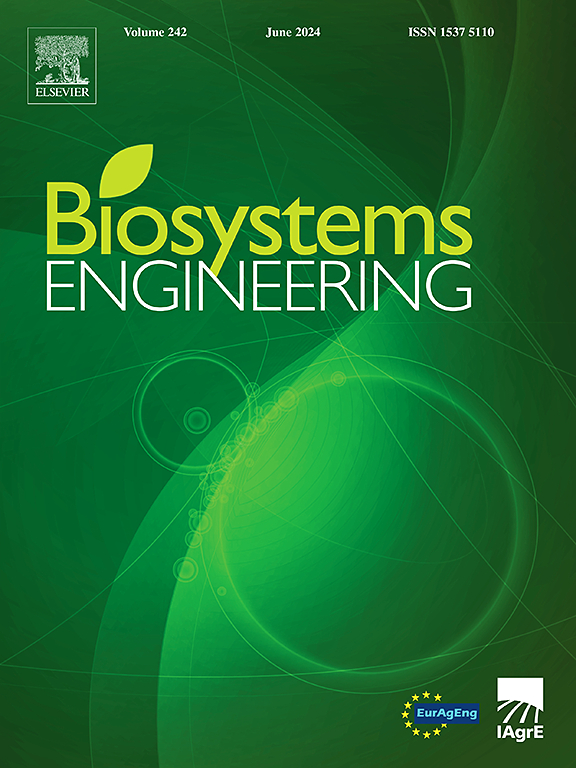Early detection of downy mildew in vineyards using deep neural networks for semantic segmentation
IF 4.4
1区 农林科学
Q1 AGRICULTURAL ENGINEERING
引用次数: 0
Abstract
Downy mildew is a critical disease in viticulture, typically identified through manual inspection of individual leaves in the field by experts. The combination of artificial intelligence techniques with mobile platforms can optimise non-invasive detection. This work focused on employing semantic segmentation deep neural networks to detect visual symptoms of downy mildew in high-resolution grapevine images under field conditions. Vineyard canopy images were collected from 14 plots using both manual and mobile platform methods. The study compared six architectures and six encoders using transfer learning, as well as two SegNet AdHoc architectures. To address imbalance problems, simple data augmentation, MixUp, oversampling, and undersampling techniques were employed. The results were adjusted through test-time augmentation. The study found that the U-Net architecture, using the MobileVit-S encoder and the Dice loss function, was particularly efficient. The U-Net architecture with light-weight encoders exhibited potential for real-time applications. The robustness of the model was improved by combining oversampling and undersampling with simple data augmentation during training. The classification of areas with and without disease symptoms achieved an accuracy of 86% and an f1-score of 82%. Additionally, the number of symptoms in grapevine canopy images was detected with an NRMSE of 12%. In conclusion, the proposed methodology shows promise for efficiently early assessing grapevine downy mildew under field conditions. This approach could be applied to other crop diseases and pests, taking advantage of the complexity of the dataset to strengthen the robustness of the model in real-world scenarios.
基于深度神经网络语义分割的葡萄园霜霉病早期检测
霜霉病是葡萄栽培中的一种重要病害,通常由专家在田间对单个叶片进行人工检查。人工智能技术与移动平台的结合可以优化非侵入性检测。本研究的重点是利用语义分割深度神经网络在野外条件下检测高分辨率葡萄树图像中的霜霉病视觉症状。使用手动和移动平台方法收集了14个地块的葡萄园冠层图像。该研究比较了使用迁移学习的六种架构和六种编码器,以及两种SegNet AdHoc架构。为了解决不平衡问题,采用了简单的数据增强、MixUp、过采样和欠采样技术。通过增加测试时间来调整结果。研究发现,使用MobileVit-S编码器和Dice损失函数的U-Net架构特别高效。具有轻量级编码器的U-Net架构显示了实时应用的潜力。通过将过采样和欠采样相结合,并在训练过程中进行简单的数据增强,提高了模型的鲁棒性。有和无疾病症状区域的分类准确率为86%,f1评分为82%。此外,在葡萄藤冠层图像中检测到的症状数量的NRMSE为12%。总之,所提出的方法有望在田间条件下有效地早期评估葡萄霜霉病。这种方法可以应用于其他作物病虫害,利用数据集的复杂性来增强模型在现实场景中的鲁棒性。
本文章由计算机程序翻译,如有差异,请以英文原文为准。
求助全文
约1分钟内获得全文
求助全文
来源期刊

Biosystems Engineering
农林科学-农业工程
CiteScore
10.60
自引率
7.80%
发文量
239
审稿时长
53 days
期刊介绍:
Biosystems Engineering publishes research in engineering and the physical sciences that represent advances in understanding or modelling of the performance of biological systems for sustainable developments in land use and the environment, agriculture and amenity, bioproduction processes and the food chain. The subject matter of the journal reflects the wide range and interdisciplinary nature of research in engineering for biological systems.
 求助内容:
求助内容: 应助结果提醒方式:
应助结果提醒方式:


